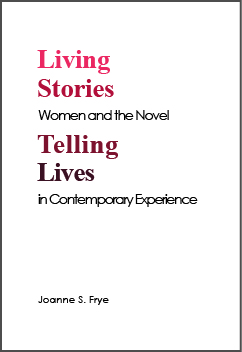Living Stories, Telling Lives: Women and the Novel in Contemporary Experience
(University of Michigan Press, 1986).
Hamilton Prize Winner 1984
Marriage and death have seemed the most likely resolutions to the plots of traditional female-centered novels. Such endings reflect the power of both narrative expectation and the cultural ideology that sets femaleness and autonomy in conflict. Joanne S. Frye’s analysis of novels by contemporary writers Margaret Drabble, Gail Godwin, Margaret Laurence, Doris Lessing, Toni Morrison, and Alice Munro explores the ways in which a female first-person narrator can shape other choices for herself. By claiming her own voice, a protagonist chooses and tells her own life. The selecting, ordering, and sensemaking involved in the narrative process become models for the feminist process of finding new causal explanations, new interpretations of the past, and new solutions for the future.Living Stories, Telling Livesreaffirms the value of literature—in the lives of readers and in the redefinition of culture. (from the back cover)
Comments:
“The book will have wide-ranging implications for feminist literary studies; it makes an original contribution to the ongoing debate about women and representation, and it is sure to be read and to provoke much discussion.” –Margaret Homans, back cover
“Frye’s book emerges squarely out of the American feminist tradition in literary criticism and exemplifies that tradition at its best. . . . The beauty of Frye’s strategy is that it lifts her out of the pessimism (or reactive utopianism) endemic to poststructuralist formulations of the language problem.” –Betsy Draine, in “Feminist Literary Theory,” Signs,vol 15, No 1 (Autumn, 1989).

